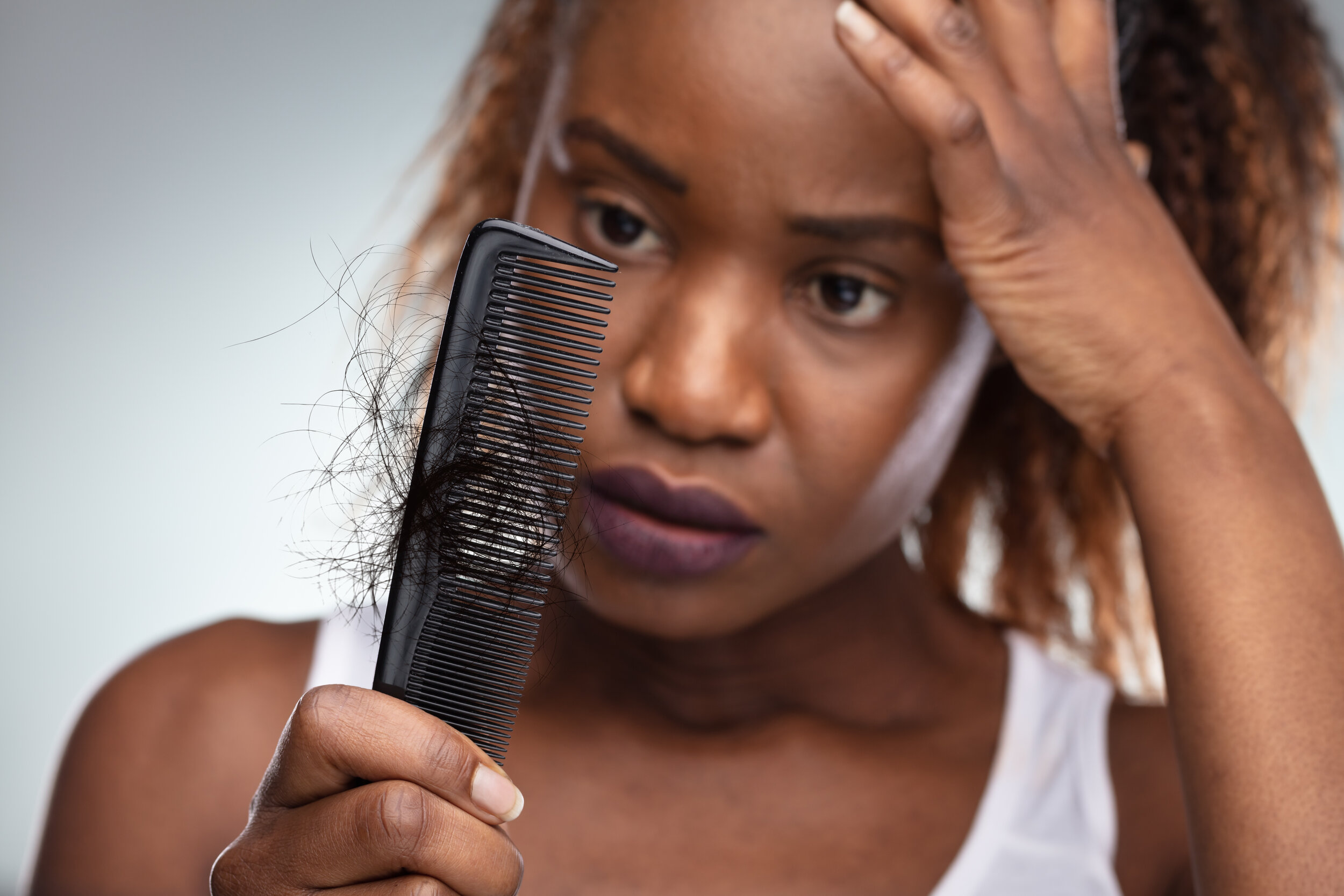Postpartum Hair Loss – Meaning, Causes, Visible Signs And Safety Measures
Table of Contents
Postpartum hair loss is an issue that calls for lots of concern and thoughts but is also absolutely normal. Losing a reasonable amount of hair is annoying and familiar among new mothers. However, the effect is worth it.

Excessive hair shedding is a typical experience for most new moms a few months after giving birth. This is not true hair loss, and dermatologists refer to it as such. The decrease in estrogen levels is the primary cause of this condition.
Nevertheless, it is temporary, and most women do not need to take any action since their hair will return to its normal fullness by their child’s first birthday. Furthermore, some women may even regain their normal fullness even earlier.
Causes Of Postpartum Hair Loss
Postpartum hair loss occurs due to fluctuations in estrogen hormone levels during and after pregnancy. During the last trimester of pregnancy, estrogen levels increase, preventing the typical shedding of hair and making the hair appear thick and lush.
Although, after giving birth, estrogen levels decrease, resulting in many hairs entering the resting phase of hair growth, leading to hair shedding after a few months.
Visible Signs Of Postpartum Hair Loss
The primary indication of postpartum hair loss is the observation of an increased amount of hair falling out than the usual amount on your hairbrush, comb, pillow, or floor. Moreover, you may also notice a higher amount of loose hair clinging to your clothing.
The areas most commonly affected by this phenomenon are the crown of the head and the hairlines.
How Postpartum Hair Loss Occurs & How Long It Lasts
During pregnancy, hormonal changes can cause many hairs in the growth phase (anagen) to suddenly enter the resting phase (telogen). As a result, a few months after giving birth, you may experience hair loss. You shed up to 100 hairs daily, from 80,000 to 120,000 on your scalp.
However, you may lose more than 100 hairs daily with postpartum hair loss. Although it can be distressing to lose hair, postpartum hair loss is temporary and typically lasts less than six months. By the time your child reaches one year old, your hair should have regained its fullness.
Hair loss usually begins within five months of giving birth and peaks around four months. It typically lasts for around three months and slows down after that time.
If you have been experiencing hair loss for more than six months, you should communicate with your healthcare provider. This is because hair loss that persists for an extended period might indicate an underlying condition that causes hair loss, for instance, thyroid disease or iron deficiency.
Can Postpartum Hair Loss Affect Your Baby?
Losing hair after giving birth is a common phenomenon and does not pose any threat to your baby. However, there is a rare possibility that the hair that falls out may wrap around your baby’s toes, fingers, or other body parts, known as a hair tourniquet.
This can cause discomfort and restrict blood flow. In such a situation, it is important to carefully unwind or cut the hair or seek medical assistance from your baby’s healthcare provider.
Recommended: Vitamins and hair growth
Are They Preventions For Postpartum Hair Loss?
No! Telogen effluvium, another name for postpartum hair loss, cannot be treated or new hair growth accelerated. It is impossible to prevent postpartum hair loss, but being aware of it beforehand can help you prepare for it.
Although medical practitioners suggest maintaining a healthy and balanced diet, being gentle with your hair and trying out different hair products and styles to help cope with the situation.
Dermatologists suggest some tips to help you cope with excessive hair shedding until your hair regains its normal fullness.
To add volume, they recommend using a volumizing shampoo that contains ingredients like protein that can coat the hair, making it look fuller. You should avoid shampoos labelled “conditioning shampoo” as they contain heavy conditioners that can weigh down your hair and make it look limp.
Use a conditioner formulated for fine hair and apply it mainly to the ends of your hair since applying it to your scalp and all of your hair can weigh it down. Avoid conditioners labelled “intensive conditioners” as they are too heavy.
Finding the best shampoo and conditioner for thin hair may take some time, as it’s a matter of trial and error. A new hairstyle can also make your hair look fuller, and an experienced stylist can suggest a suitable one.
Many new mothers prefer short haircuts as they can make hair look fuller and are easier to manage, saving time, which can be a real advantage when caring for a baby.
Conclusion:
Hair loss after giving birth is a common occurrence among new mothers. Still, it can also happen to women who have undergone significant hormonal changes recently, such as stopping certain medications or undergoing hormonal treatments.
Stress, illness, or nutritional deficiencies can also cause hair loss in some individuals by triggering hormonal changes similar to those during pregnancy. Nevertheless, postpartum hair loss is most frequently linked to hormonal shifts after childbirth.
